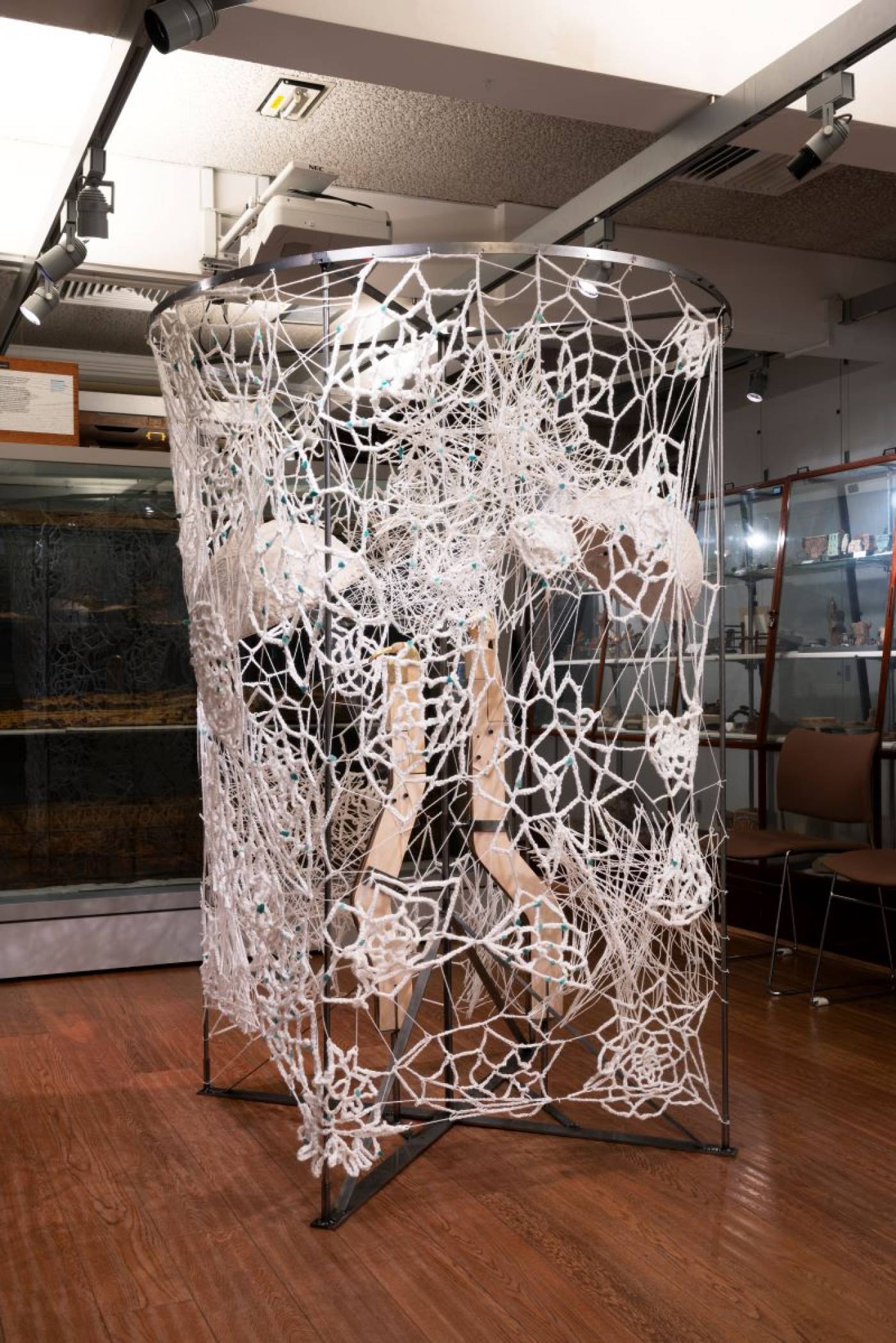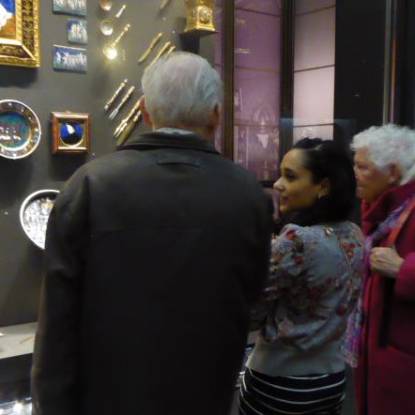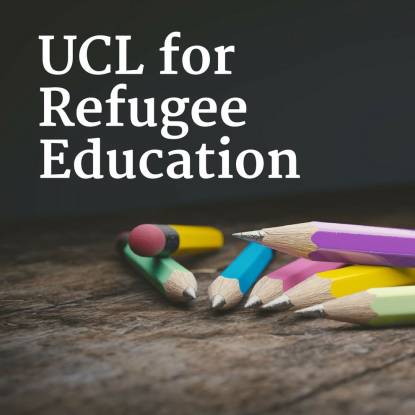Student Review - Otherlands: Museum for a Museum

Image © Reliant Imaging
Otherlands: Museum for a Museum, crafted through seamless collaboration between first-year BSc Architecture students and the UCL Petrie Museum of Egyptian and Sudanese Archaeology, presents a captivating fusion of creativity and history. Unveiling six distinctive installations, the two-day public showcase draws profound inspiration from a pantheon of 12 ancient Egyptian deities:
- Amun (God of the air)
- Horus (God of the sky)
- Nephthys (Goddess of mourning, friend and protector of the dead)
- Anubis (God of funerary rites, embalming and dead)
- Ra (God of the sun)
- Set (God of desert and chaos)
- Isis (Wife of Osiris, Goddess of protection, good fortune, protector of the dead)
- Osiris (God of the underworld, judge of the dead)
- Ptah (the creator, God of craftsmen, mastermind of the universe)
- Thoth (God of knowledge)
- Khnum (God of the source of the Nile)
- Tefnut (Goddess of moisture, dew and rain)
In October 2023, 90 architecture students came together in six groups to respond to the Museum’s collection of Egyptian archaeology. This innovative endeavour navigated the realms of time and space and explored themes of micro-environments, the afterlife, use, immateriality and display. Utilising the thematic essence of these deities, they constructed installations that transcend conventional boundaries, essentially creating a museum within a museum.
The exhibition emerges as a testament to the symbiotic relationship between the ancient and the contemporary, and defies temporal constraints and spatial confines, inviting spectators to enjoy the interplay of time and physical space.

Osiris and Isis: Sanctuary. Image © Reliant Imaging

The Tapestry of Being. Image © Reliant Imaging

Rain, River, Flood. Image © Reliant Imaging

The Seen and Unseen. Image © Reliant Imaging

Emeritus Gods. Image © Reliant Imaging

Ra/Set. Image © Reliant Imaging
The installations form a harmonious tapestry, weaving together these deities and contemporary architectural innovation. The Tapestry of Being intricately intertwines Nephthys and Anubis, creating a narrative that transcends life, death, and the afterlife.
The Seen and Unseen symbolises the connection between Horus and Amun, inviting participants on a sensory journey blurring the lines between visible and invisible realms.
Ra/Set adds a poignant layer, emphasising the dichotomy of Ra symbolising stability and routine and Set embodying chaos, unpredictability and the need for adaptation.
Rain, River, Flood explores the constraint of museum spaces, embodying Tefnut and Khnum's manifestations through a mesmerising water cycle initiated by human intervention.
Emeritus Gods pays homage to retired deities, with a crescent moon symbolising Thoth and introducing the theme of enlightenment through crocheted weaves. Lastly, Osiris and Isis: Sanctuary involves a curated performance and cocoon structure, symbolising the eternal cycle of life in the reconstruction of the body.
The brilliance of the Otherlands is not confined to the realm of architecture; it is an inclusive showcase open to all, transcending the boundaries of expertise to resonate with audiences beyond architecture students. What sets this apart is the delicate and meticulous weaving together of diverse ideas and specific details, a testament to the remarkable effort and attention to detail invested by the students.
The exhibition unfolds as a tapestry of contrasts, exemplified by Rain, River, Flood where the conscious industrial aesthetic, reminiscent of manmade structures, encounters the celestial energies harnessed through human interaction. The exhibition plays with colours, using materials in congruence with hues associated with deities and integrating them with the existing collections in the display cabinets. The Seen and Unseen incorporates wooden stands resembling the feet of a falcon and pays homage to Horus, adding an extra layer of symbolism.
This careful consideration of materials, colours, and symbolic details not only showcases the students' artistic prowess but also ensures a harmonious integration of their creations into the broader museum context, creating an immersive experience that captures the essence of ancient Egyptian mythology.
The thoughtful incorporation of interactive elements, designed to engage the audience physically, adds an extra layer of immersion to the overall experience. The exhibition becomes a dynamic space where spectators can actively participate, breaking the traditional barrier between observer and art. This deliberate choice to play with space not only underscores the innovative spirit of the showcased installations but also caters to the unique setting of the Museum. The carefully crafted pieces invite the audience to physically interact, offering a hands-on engagement that transforms the viewing experience into a participatory journey.
Otherlands: Museum for a Museum left an indelible impression, with its delicate interplay of interactive elements, attention to symbolic details, and inclusive design. I left thoroughly impressed by the meticulous craftsmanship and thoughtful integration, making Otherlands a remarkable testament to the enduring resonance of ancient mythology within modern artistic expression.
 Close
Close



